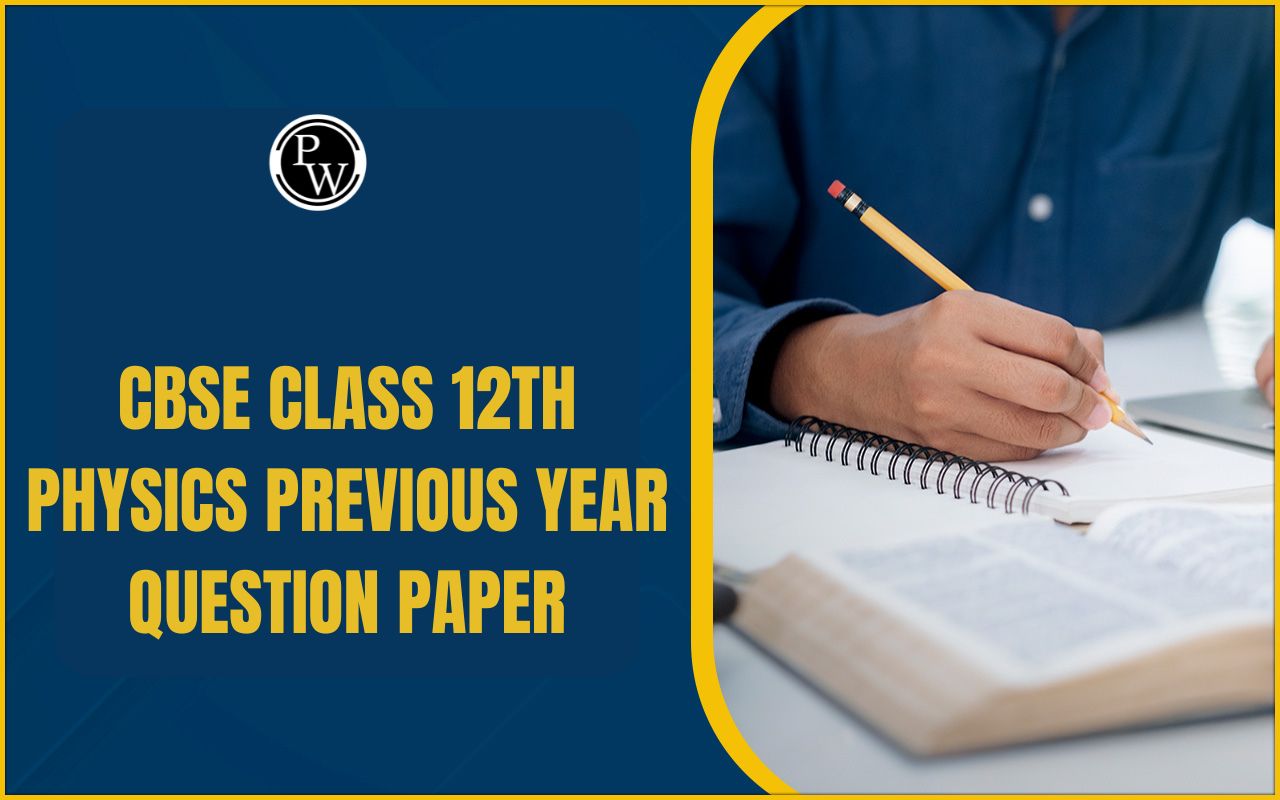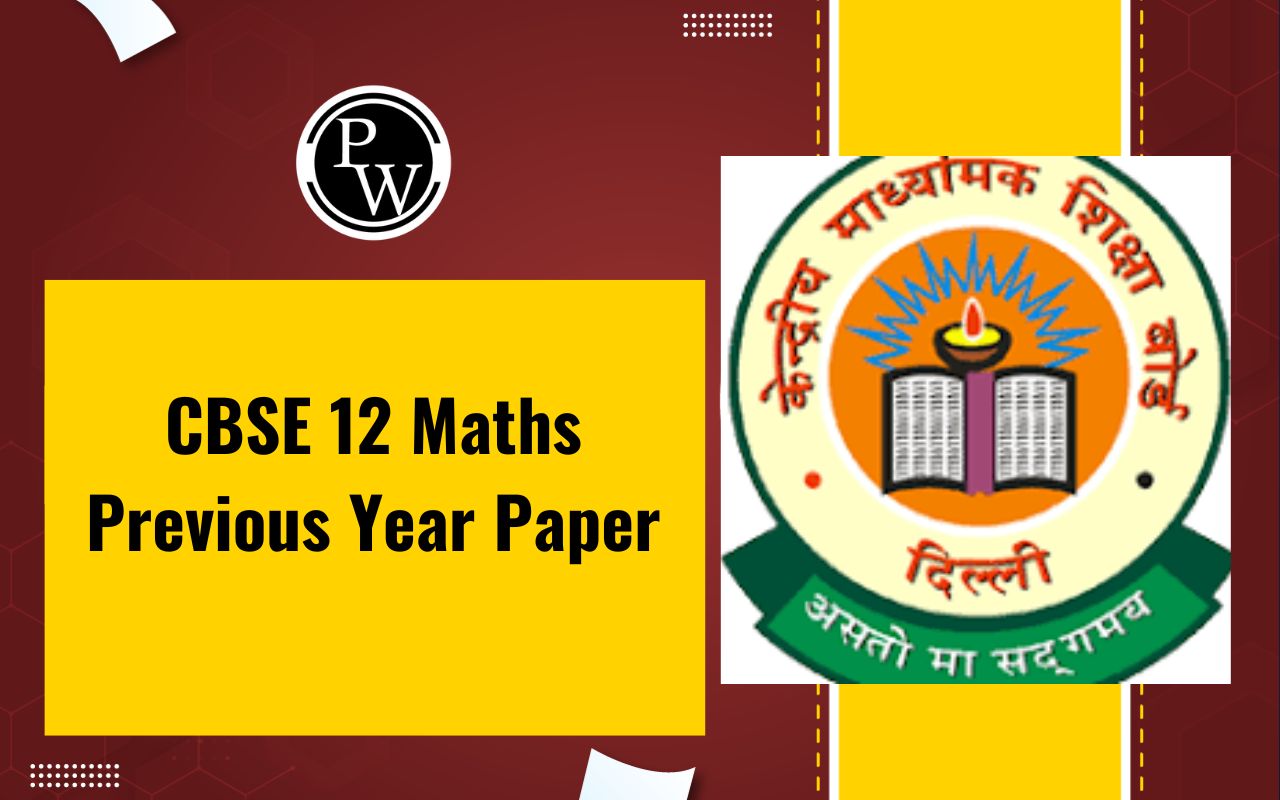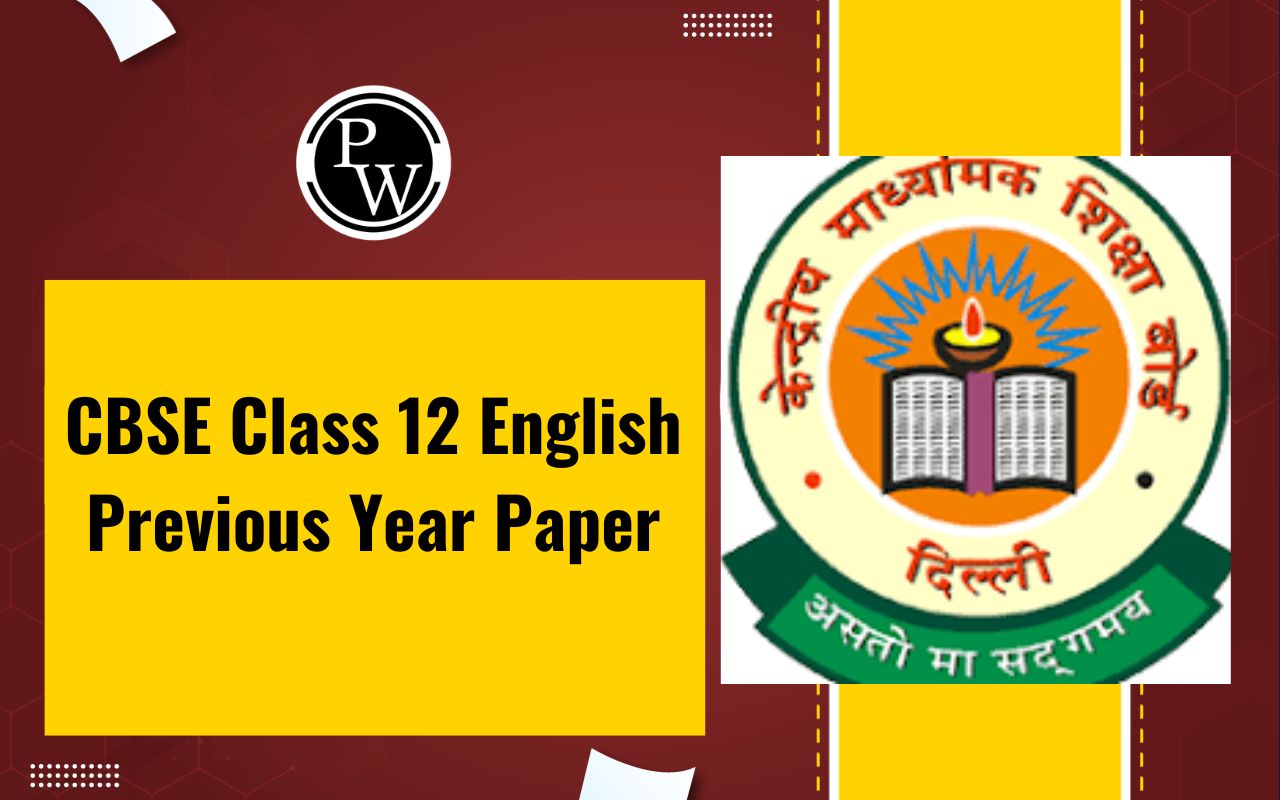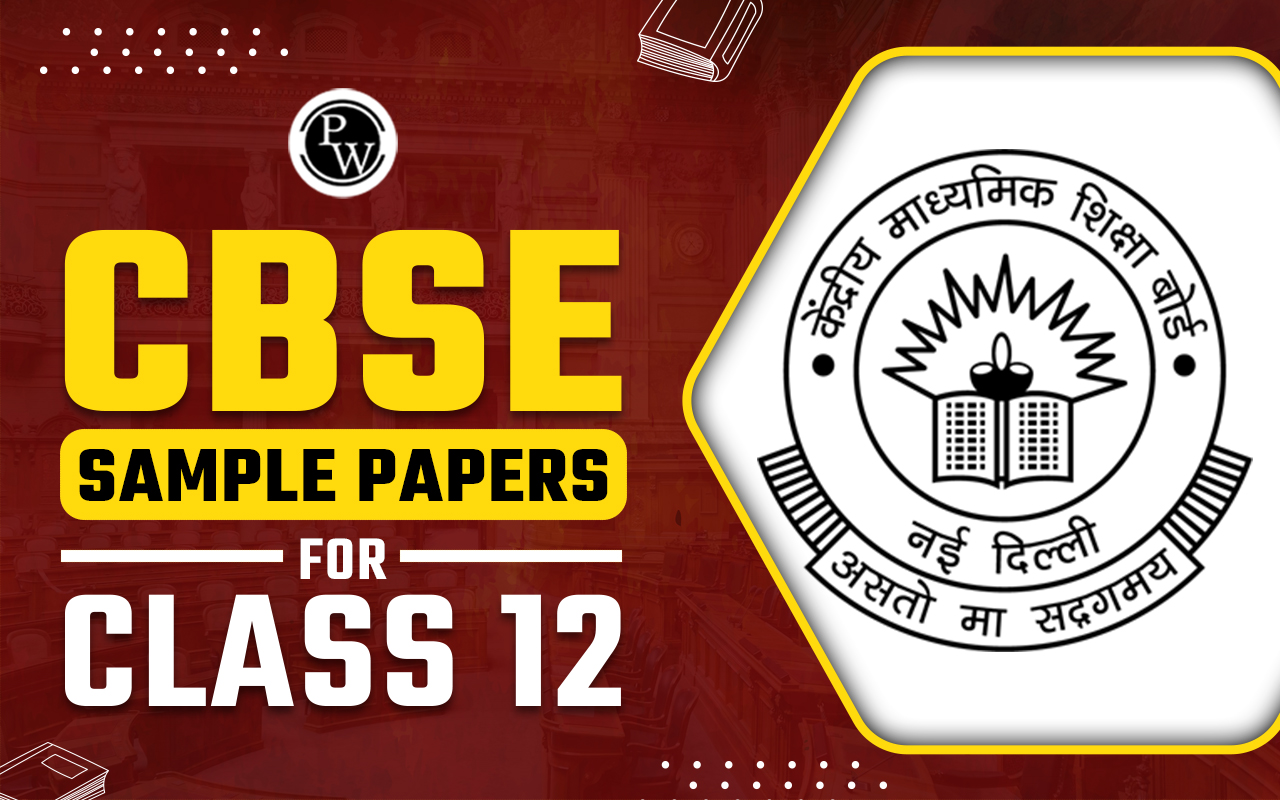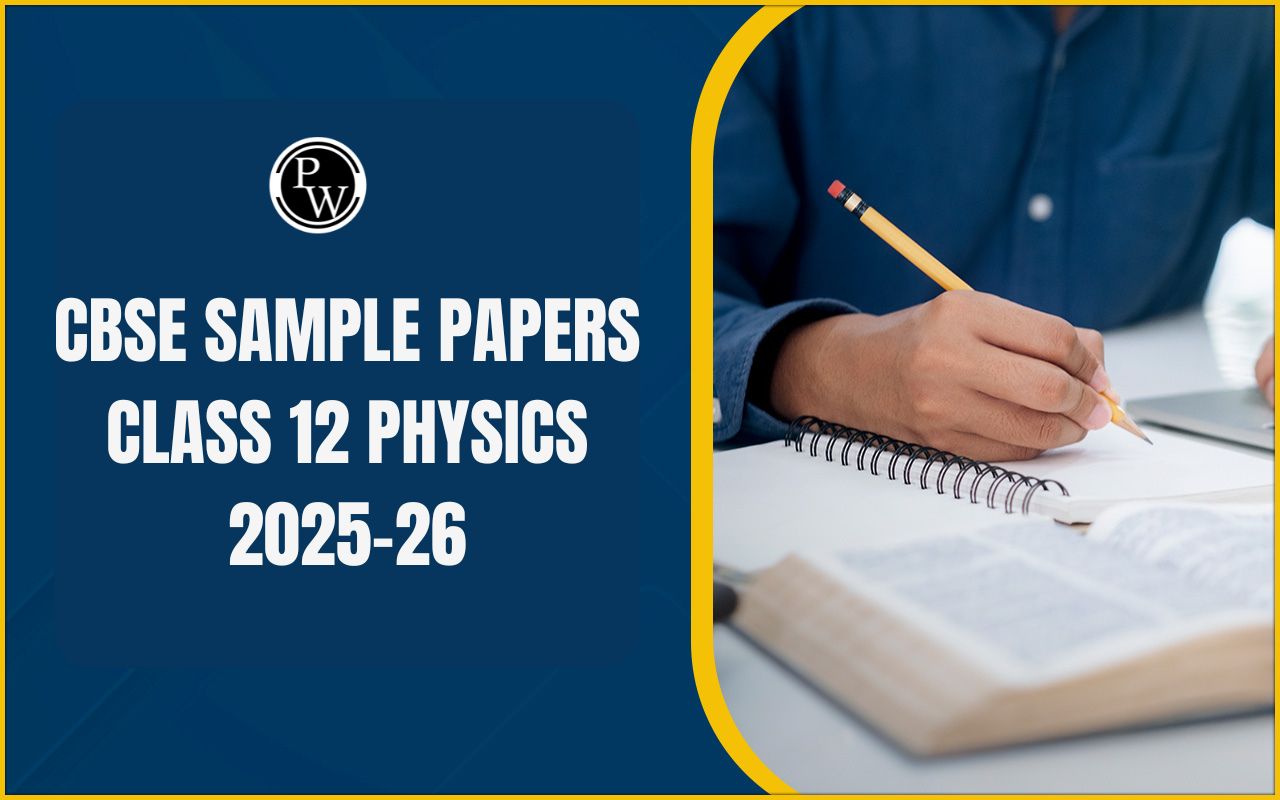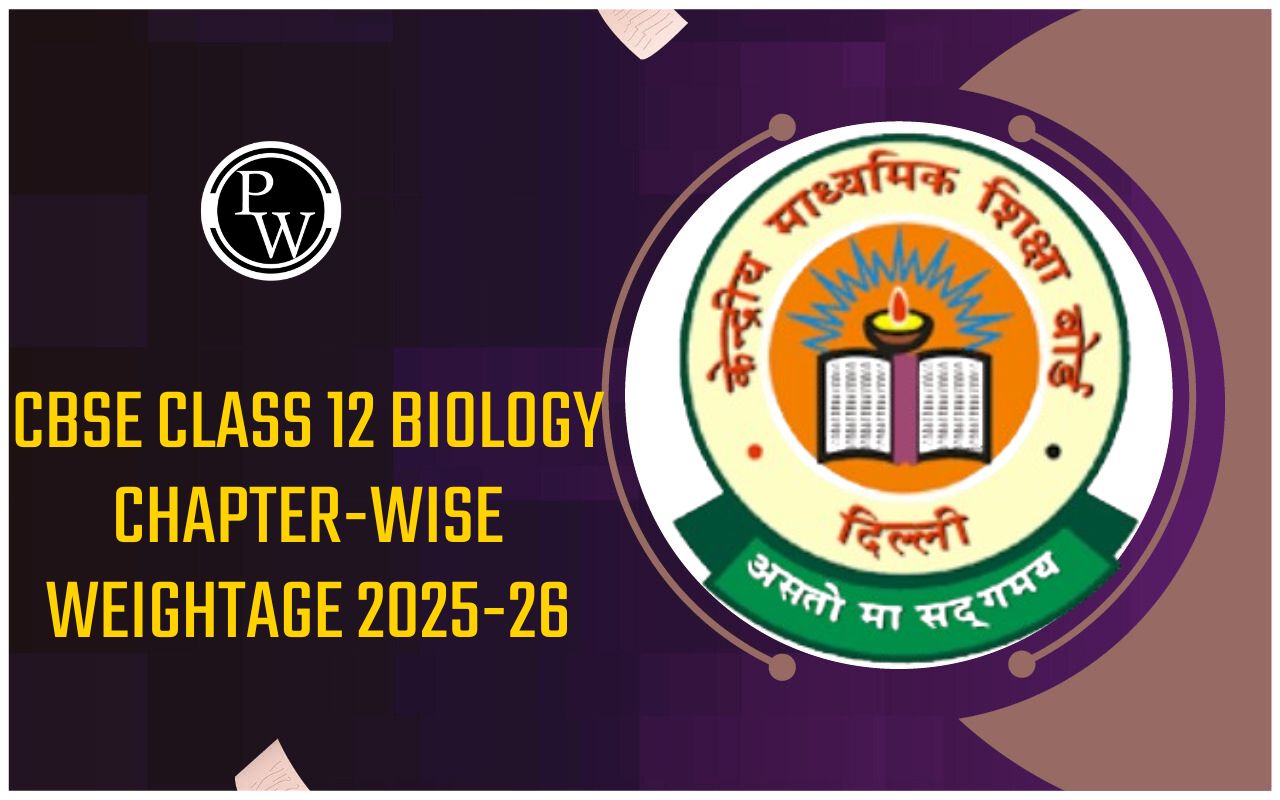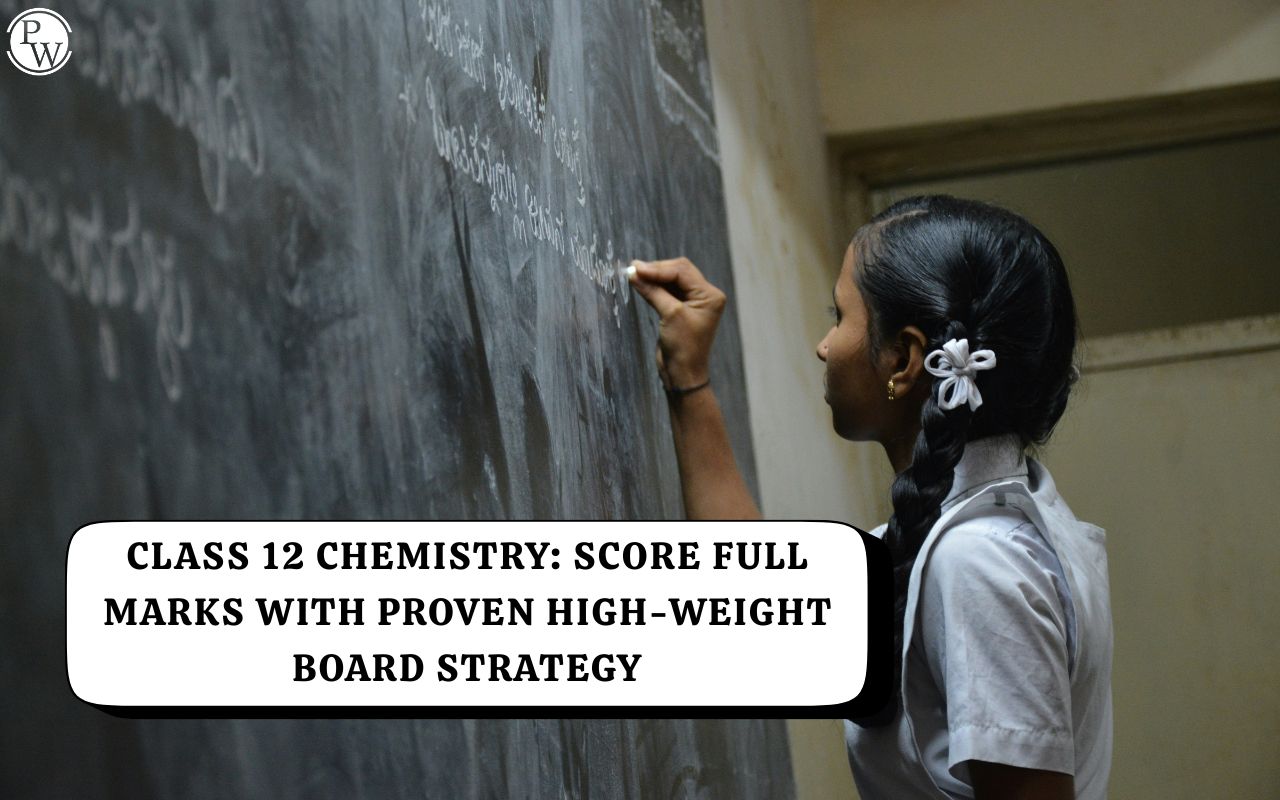
CBSE Class 12 Maths Syllabus 2024-25 : The Central Board of Secondary Education (CBSE) has released the Class 12 Maths Syllabus for the 2024-25 academic session. This syllabus is structured into six key components, emphasizing a comprehensive understanding of mathematical concepts. The theoretical examination for Class 12 Maths is worth a total of 80 marks.
Unlike previous years, the syllabus does not specify a chapter-wise mark distribution. Instead, it allocates weightage based on the skills assessed through the examination questions. This approach encourages students to focus on developing a deep understanding of concepts rather than merely memorizing content. Students can utilize this page to review the complete syllabus and conveniently download the CBSE Class 12 Maths Syllabus 2024-25 PDF for their reference. This resource will help in effective preparation and help students strategize their study plans efficiently.CBSE Class 12 Maths Syllabus 2024-25
The CBSE Class 12 Maths Syllabus 2024-25 is a thorough and difficult curriculum that covers a broad variety of mathematical topics. The CBSE Class 12 Maths Syllabus 2024-25 is designed to provide students with a firm foundation in fundamental mathematical concepts as well as an understanding of the most current advances in the subject.CBSE Class 12 Maths Additional Practice Paper 2023-24
The CBSE Class 12 Maths Syllabus 2024-25 also includes a component of practical study, which lets students apply their mathematical abilities to real-world issues.CBSE Class 12 Maths Syllabus 2024-25 Overview
CBSE Class 12 Maths Syllabus 2024-25 addresses these significant subjects. In order to fully comprehend the concepts presented in the chapter and make effective use of the provided solutions, it is recommended that students go over each topic in great detail. The intention is for students to effortlessly achieve excellent exam scores after reviewing and practicing these responses.3 Month Study Plan CBSE Class 12
CBSE Class 12 Maths Syllabus 2024-25 Chapter-Wise Weightage
The CBSE Class 12 Maths Syllabus 2024-25 is vast and challenging. It covers a broad variety of subjects and necessitates that students have a strong mathematical foundation. However, the course is also enjoyable, and by mastering the material, students will get a deep grasp of mathematics as well as the skills needed to succeed in college and beyond. The course structure of the CBSE Class 12 Maths Syllabus 2024-25 is shown in the table below.| CBSE Class 12 Maths Syllabus 2024-25 Chapter-Wise Weightage | ||
| No | Units | Marks |
| I | Relations and Functions | 08 |
| II | Algebra | 10 |
| III | Calculus | 35 |
| IV | Vectors and Three–Dimensional Geometry | 14 |
| V | Linear Programming | 05 |
| VI | Probability | 08 |
| TOTAL | 80 | |
| Internal Assessment | 20 | |
CBSE Class 12 Revised Date Sheet
CBSE Class 12 Maths Syllabus 2024-25 PDF
The CBSE Class 12 Maths Syllabus for the academic year 2024-25 is an important resource for students studying maths. This syllabus outlines the topics and concepts that students will cover throughout the academic year. Understanding the syllabus helps students plan their study schedule effectively, allocate time for each topic, and ensure comprehensive learning. With the PDF link provided below, students can easily download and refer to the CBSE Class 12 maths Syllabus whenever needed. This enables students to stay organized, track their progress, and prepare thoroughly for their maths classes and examinations.CBSE Class 12 Maths Syllabus 2024-25 PDF
CBSE Class 12 Maths Syllabus 2024-25 Chapter-Wise Topics
Students may get the most recent CBSE Class 12 Maths Syllabus 2024-25 by clicking on the link below. Going over the syllabus will help students understand the subjects they will be studying in Maths over the academic year. They must consult it every time they appear for exams. This CBSE Class 12 Maths Syllabus 2024-25 PDF will assist students in keeping track of the subjects studied so far and what remains to be covered.| CBSE Class 12 Maths Syllabus 2024-25 Chapter-Wise Topics | ||
| S.No | Chapter Name | Topics |
| 1. | Relations and Functions | Types of relations: reflexive, symmetric, transitive and equivalence relations. One-to-one and onto functions. |
| 2. | Inverse Trigonometric Functions | Definition, range, domain, principal value branch. Graphs of inverse trigonometric functions. Elementary properties of inverse trigonometric functions. |
| 3. | Matrices | Concept, notation, order, equality, types of matrices, zero and identity matrix, transpose of a matrix, symmetric and skew-symmetric matrices. Operation on matrices: Addition and multiplication and multiplication with a scalar. Simple properties of addition, multiplication and scalar multiplication. Commutativity of multiplication of matrices and the existence of non-zero matrices whose product is the zero matrices. Invertible matrices and proof of the uniqueness of inverse. |
| 4. | Determinants | Determinant of a square matrix (up to 3 x 3 matrices), properties of determinants, minors, cofactors and applications of determinants in finding the area of a triangle. Adjoint and inverse of a square matrix. Consistency, inconsistency and number of solutions of a system of linear equations by examples, solving a system of linear equations in two or three variables using the inverse of a matrix. |
| 5. | Continuity and Differentiability | Continuity and differentiability, derivatives of inverse trigonometric functions, derivative of implicit functions, Concepts of exponential and logarithmic functions. Derivatives of logarithmic and exponential functions. Logarithmic differentiation is a derivative of functions expressed in parametric forms. Second-order derivatives. |
| 6. | Application of Derivatives | Applications of derivatives: rate of change of bodies, increasing/decreasing functions. Use of derivatives in maxima and minima. |
| 7. | Integrals | Integration is the inverse process of differentiation. Integration of a variety of functions by substitution, by partial fractions and by parts, Evaluation of simple integrals of the following types and problems based on them. Fundamental Theorem of Calculus (without proof). Basic properties of definite integrals and evaluation of definite integrals. |
| 8. | Application of Integrals | Applications in finding the area under simple curves, especially lines, circles/parabolas/ellipses (in standard form) |
| 9. | Differential Equations | Definition, order and degree, general and particular solutions of a differential equation. Solution of differential equations by method of separation of variables solutions of homogeneous differential equations of first order and first degree. Solutions of linear differential equation of the given type. |
| 10. | Vector Algebra | Vectors and scalars, magnitude and direction of a vector, direction cosines and direction ratios of a vector. Types of vectors (equal, unit, zero, parallel and collinear vectors), position vector of a point, negative of a vector, components of a vector, addition of vectors, multiplication of a vector by a scalar, position vector of a point dividing a line segment in a given ratio. Definition, Geometrical Interpretation, properties and application of scalar (dot) product of vectors, vector (cross) product of vectors, scalar triple product of vectors. |
| 11. | Three Dimensional Geometry | Direction cosines and direction ratios of a line joining two points. Cartesian equation and vector equation of a line, coplanar and skew lines, the shortest distance between two lines, and Cartesian and vector equation of a plane. The angle between two lines. |
| 12. | Linear Programming | Introduction, related terminology such as constraints, objective function, optimization, and different types of linear programming problems. The mathematical formulation of L.P. Problems, graphical method of solution for problems in two variables, feasible and infeasible regions (bounded and unbounded), feasible and infeasible solutions, optimal feasible solutions (up to three non-trivial constraints). |
| 13. | Probability | Conditional probability, multiplication theorem on probability Independent events, total probability, Baye’s theorem, Random variable and its probability distribution, mean and variance of a random variable. |
CBSE Class 10 Revised Date Sheet
CBSE Class 12 Maths Syllabus 2024-25 Deleted Topics
CBSE Class 12 Maths Syllabus 2024-25 deleted topics are mentioned in the table below.| CBSE Class 12 Maths Syllabus 2024-25 Deleted Topics | ||
| UNIT NAME | CHAPTER NAME | DELETED TOPIC |
| Relations and Functions | Relations and Functions | composite functions, the inverse of a function |
| Relations and Functions | Inverse Trigonometric Functions | Elementary properties of inverse trigonometric functions |
| Algebra | Matrices | Concept of elementary row and column operations. |
| Algebra | Determinants | properties of determinants |
| Calculus | Continuity and Differentiability | derivative of a composite function Rolle’s and Lagrange’s Mean Value Theorems (without proof) and their geometric interpretation |
| Calculus | Applications of Derivatives | tangents and normals use of derivatives in approximation |
| Calculus | Integrals | Definite integrals as a limit of a sum, |
| Calculus | Applications of the Integrals | The area between any of the two above-said curves |
| Vectors and Three-Dimensional Geometry | Vectors | scalar triple product of vectors |
| Vectors and Three-Dimensional Geometry | Three – dimensional Geometry | coplanar lines Cartesian and vector equation of a plane. The angle between (i) two lines, (ii) two planes, (iii) a line and a plane.Distance of a the point from a plane |
| Linear Programming | Linear Programming | different types of linear programming (L.P.) problems the mathematical formulation of L.P. problems |
| Probability | Probability | variance of random variable |
Last Month Preparation Strategy for class 12
CBSE Class 12 Maths Syllabus 2024-25 Deleted Chapters with Page Number
You can also check the number of pages and the number of questions which have been deleted below:| Chapter | Page No. | Dropped Topics/Chapters |
| Chapter 7: Integrals | 290–291 291–292 298–299 613–616 331–334 352–354 355 | Points (xi)–(xiii) in the List of Derivatives 7.2.1 Geometrical Interpretation of Indefinite Integral 7.2.3 Comparison between Differentiation and Integration 7.6.3 Type of Integral 7.7.1 Definite Integral as the Limit of a Sum Ques. 19, 32, 40 and 44 Point 2 in the Summary (xiv) and (xv) in Some Standard Integrals |
| Chapter 8: Application of Integrals | 363–365 366 366–372 373–376 377 | 8.2.1 The Area of the Region Bounded by a Curve and a Line Ques. 3 and 6–11 in Exercise 8.1 8.3 Area between Two Curves Examples 11, 13 and 14 Ques. 2–3, 6–7, 8–15, 18– 19 (Miscellaneous Exercise) The last Two Points of the Summary |
| Chapter 9: Differential Equations | 385–391 415–416 420–422 | 9.4 Formation of Differential Equations whose General Solution is Given Example 25 Ques. 3, 5 and 15 (Miscellaneous Exercise), Point Six of the Summary |
| Chapter 10: Vector Algebra | 616–619 619–622 | 10.7 Scalar Triple Product 10.7.1 Coplanarity of Three Vectors |
| Chapter 11: Three-Dimensional Geometry | 465 469–471 477–478 479–497 497–499 500–501 502–503 | 11.2.1 Relation between the Direction Cosines of a Line 11.3.2 Equation of a Line Passing through Two Given Points, Ques. 8–9 (Exercise 11.2) 11.6 Plane 11.7 Coplanarity of Two Lines 11.8 Angle between Two Planes 11.9 Distance of a Point from a Line 11.10 Angle between a Line and a Plane Ques. 1, 2, 5, 7–8, 10–19, 21–23 (Miscellaneous Exercise) Summary Points 13, 20–24 Full Pages |
| Chapter 12: Linear Programming | 514–527 528–529 | 12.3 Different Types of Linear Programming Problems \ Summary Points 2–9 |
| Chapter 13: Probability | 557–558 558–559 559–564 565–571 572–578 579–581 583 585–586 | 13.6 Random Variables and Its Probability Distributions Examples 22 and 23 13.6.1 Probability Distribution of a Random Variable 13.6.2 Mean of Random Variables 13.6.3 Variance of a Random Variable 13.7 Bernoulli Trials and Binomial Distribution Example 34 and 35 Ques. 5–7, 9–11 (Miscellaneous Exercise) Last 3 Points of the Summary |
| Answers | 594,596–599, 601, 604–612 | Answers of Exercises |
CBSE Class 12 Maths Syllabus 2024-25 Internal Assessment
The CBSE Class 12 Applied Maths Syllabus for Internal Assessment may be seen in the table below. Each is worth 10 marks, for a total of 20 marks. To get the highest possible grade, students should do well in periodic examinations and Math Activities held at school.| CBSE Class 12 Applied Maths Syllabus 2024-25 for Internal Assessment | |||
| Sl. No | Area and Weightage | Assessment Area | Marks allocated |
| 1. | Project work (10 marks) | Project work and record | 5 |
| Year-end Presentation/ Viva of the Project | 5 | ||
| 2. | Practical work (10 marks) | Performance of practical and record | 5 |
| Year-end test of any one practical | 5 | ||
| Total Marks | 20 | ||
Tips to cover CBSE Class 12 Maths Syllabus 2024-25
To effectively cover the CBSE Class 12 Maths syllabus for the academic year 2024-25 consider the following tips:Understand the Syllabus : Start by familiarizing yourself with the entire syllabus and CBSE Class 12 exam pattern exam pattern. Knowing the topics and their respective weightage will help you prioritize your study sessions.
Create a Study Plan : Develop a realistic study schedule that allocates time for each topic based on its importance and your understanding of the material. A well-structured plan will keep you organized and focused.
Start Early : Begin your preparation well in advance to avoid the stress of last-minute studying. Starting early will give you ample time to grasp concepts and retain information effectively.
Break It Down : Divide the syllabus into smaller, manageable sections. Focus on mastering one concept at a time before moving on to the next. This approach will make studying less overwhelming.
Use Quality Resources : Utilize a variety of study materials, including, PYQs, NCERT textbooks, reference books, and online resources.
Practice Regularly : Consistent practice is key to understanding mathematics. Solve a diverse range of problems from different sources to enhance your problem-solving skills and build confidence.
CBSE Class 12 Maths Syllabus 2024-25 FAQs
What is the syllabus of Maths in CBSE Board 2024?
Is the class 12 2024 syllabus released?
Is the 2024 board exam easy or hard?
Is the CBSE math paper easy?
Is the NCERT syllabus going to change in 2024?



